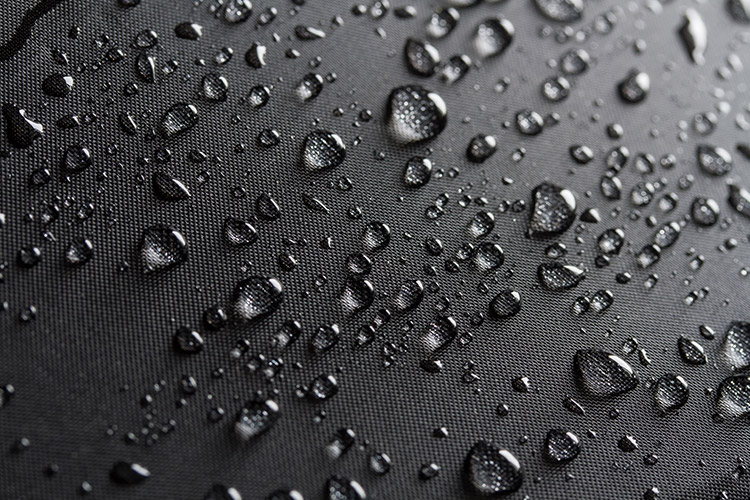Rain, rain go away! SFU chemists develop new waterproofing solution

A Simon Fraser University student’s experimental error in 2016 helped chemistry professor Hogan Yu and graduate student Lishen Zhang discover the waterproofing solution they were in search of. The team has now patented a coating that is cheaper, free of harmful fluorinated compounds, effective on fabric, wood, glass and metal, and superior to current consumer products.
Yu explains the serendipitous event: “Zhang and a student were trying the same experiment but the student received results that were far superior to Zhang’s. Upon further investigation, we discovered that the student had used a reagent that had been exposed to air for a longer period of time. We have since learned that this extended exposure led the reagent to absorb moistures which created a surprising reaction mechanism that is now critical to our formula.”
After five years of testing and optimizing the formula to achieve the best performance, Yu and Zhang’s research has now been published in ![]() Nature Communications. This article shows that the new coating method demonstrates superior superhydrophobic (complete waterproofing) performance free of obstacles that current waterproofing solutions face—durability, cost and scalability of production.
Nature Communications. This article shows that the new coating method demonstrates superior superhydrophobic (complete waterproofing) performance free of obstacles that current waterproofing solutions face—durability, cost and scalability of production.
Zhang says that their unique coating is based on a simple combination of octadecyltrichlorosilane (OTS), water and a hexane solvent. “Our protocol relies on the reaction of the exact mixture of OTS and water. This yields solid particles that range from ultrafine to fine that can be diluted with industrial solvents—in this case, hexane as an inert dispersion medium.”
Varying compositions and dimensions of fabric, wood, glass and metal can be waterproofed by simply dipping it or spraying it with the coating mixture. So far the coating has proven to be effective for at least six months. Further durability tests are in progress.
The team used the water contact angle to measure the effectiveness of their coating. “When a water droplet meets a surface,” says Yu “it will either spread or form a stable droplet depending on whether the surface is hydrophilic (water loving) or hydrophobic (water repelling). On a hydrophobic surface, the water will retain a droplet shape, and contacts the solid in a certain angle. The higher the contact angle, the more spherical the water droplet, and the more waterproof the surface is.”
Yu and his team tested eight other waterproofing products including Scotchgard™, Woods™, KIWI™, Nikwax TX, NeverWet® and Grangers™, and found that their product had the highest water contact angle values.
Yu notes that his solution will also be up to 90% cheaper to produce.
They predict that the coating can also be applied to boats for protection against barnacles and seaweed, to iron or steel to create stain-resistant coatings, to pavement and vehicles for anti-icing, and to processes requiring water-oil separation.
This article was adapted and republished with permission from ![]() Simon Fraser University.
Simon Fraser University.
Up next

Critical research and development set to enhance mine safety and productivity
A new underground wireless positioning system being developed by DICE to enhance mine safety is hoping to solve that problem.